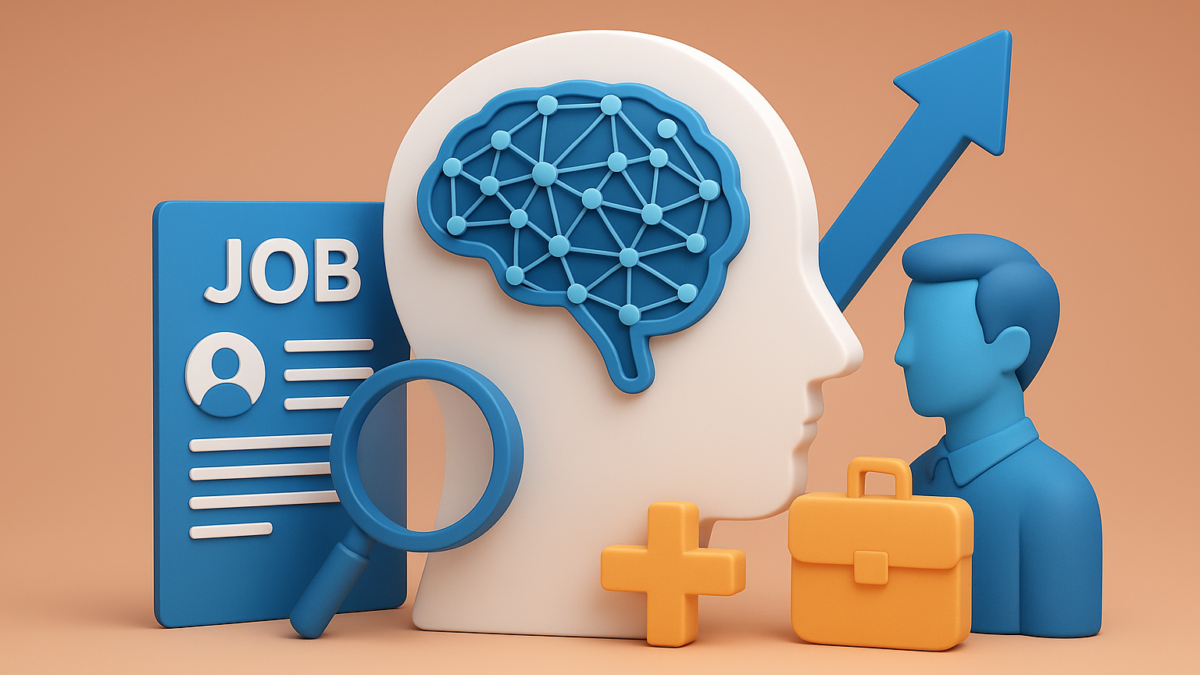Generative AI in the Job Market: Threat, Opportunity, or Evolution?
Table of Contents
Introduction
Generative AI has shifted from a futuristic concept to an everyday reality writing emails, designing graphics, composing music, and even coding software. But as tools like ChatGPT, Midjourney, and Claude become more capable, a big question looms:
What will happen to human jobs?
The impact of Generative AI on the job market is complex it’s not just replacing work; it’s redefining how work gets done. From automating routine tasks to creating entirely new career paths, AI is transforming the employment landscape faster than any technology before it.
1. How Generative AI Is Changing Workflows
Generative AI can now handle tasks once considered uniquely human like creativity, analysis, and communication.
Key areas of transformation include:
- Content creation: Automated blogs, social media posts, and marketing copy.
- Design & media: AI tools like Midjourney and Runway generate visuals and videos on demand.
- Software development: GitHub Copilot helps developers code 55% faster.
- Customer service: AI chatbots handle complex queries with human-like responses.
Instead of fully replacing jobs, AI is reshaping roles, allowing workers to focus on strategy, creativity, and innovation.
2. Jobs Most at Risk from Generative AI
While many roles are being enhanced by AI, others face partial or full automation.
High-risk job categories include:
- Administrative roles (data entry, transcription, scheduling)
- Content production (copywriting, basic design, translation)
- Customer support (tier-1 chat or call support)
- Finance & accounting (invoice processing, report generation)
According to a 2024 Goldman Sachs report, AI could automate up to 25% of global work tasks, affecting as many as 300 million jobs.
However, this isn’t entirely negative automation creates room for new, higher-value roles that never existed before.
3. Emerging Careers in the Age of Generative AI
Every technological shift creates winners and losers—and AI is no exception. The rise of generative tools has given birth to new, in-demand roles.
Examples of new AI-era careers:
- Prompt Engineers: Experts who design precise AI instructions for optimal results.
- AI Content Strategists: Professionals managing AI-human collaboration in content workflows.
- Ethical AI Specialists: Consultants ensuring AI fairness, transparency, and compliance.
- AI Trainers & Data Annotators: People who fine-tune AI models with domain expertise.
- Automation Architects: Professionals who design workflows integrating AI into existing systems.
The key takeaway: The AI revolution doesn’t destroy employment—it transforms it.
4. The Skills That Will Define the Future Workforce
To stay relevant, workers need to adapt and upskill. Technical skills are vital, but so are soft skills that AI can’t easily replicate.
Top skills for the AI-driven job market:
- Analytical thinking and problem-solving
- AI literacy and data comprehension
- Creativity and innovation
- Adaptability and emotional intelligence
- Ethical decision-making
Employers increasingly seek “hybrid professionals”—people who combine domain expertise with technological fluency.
For example, a marketing professional who understands how to use AI tools like Jasper or HubSpot’s AI assistant gains a powerful edge in productivity and insight.
5. The Role of Companies and Policymakers
The future of AI and jobs isn’t just a workforce issue—it’s a policy and leadership challenge.
Organizations must balance efficiency with ethics, ensuring AI benefits both business and employees.
Steps forward include:
- Reskilling programs: Helping employees transition into AI-enhanced roles.
- Responsible AI governance: Ensuring transparency and accountability in automation.
- Partnerships with academia: Co-developing AI courses aligned with real-world job needs.
Countries like Singapore, Germany, and the UK are already investing heavily in AI upskilling initiatives, aiming to future-proof their workforces.
6. Will Generative AI Create More Jobs Than It Replaces?
History offers a clue.
The Industrial Revolution and the Internet Era both disrupted labor markets, but eventually led to net job growth through new industries.
AI’s trajectory appears similar. The World Economic Forum predicts that AI will create 97 million new jobs by 2025, even as it automates many existing ones.
The key lies in human-AI collaboration, where humans focus on creativity, context, and empathy—areas where machines still fall short.
7. A Balanced Future: Coexistence, Not Competition
The future of work will likely be symbiotic, not adversarial. AI will handle repetitive and data-heavy tasks, freeing humans to focus on innovation and relationship-driven roles.
In this new era, productivity and purpose can coexist. The organizations that thrive will be those that embrace AI not as a replacement, but as a partner in progress.
Conclusion
Generative AI isn’t the end of jobs it’s the beginning of a new kind of work.
Yes, automation will disrupt certain roles, but it will also unlock unprecedented creativity, productivity, and efficiency across industries.
The future belongs to those who learn, adapt, and lead alongside AI not those who fear it.
Want to showcase your insights on AI, innovation, or the future of work to global decision-makers?
Use iTMunch’s B2B Content Syndication Services to amplify your content, reach high-intent audiences, and drive measurable engagement.
See Also: Whitepapers in the Era of Generative AI: From Static Reports to Co-Created Content
Generative AI in the Job Market: Threat, Opportunity, or Evolution?





